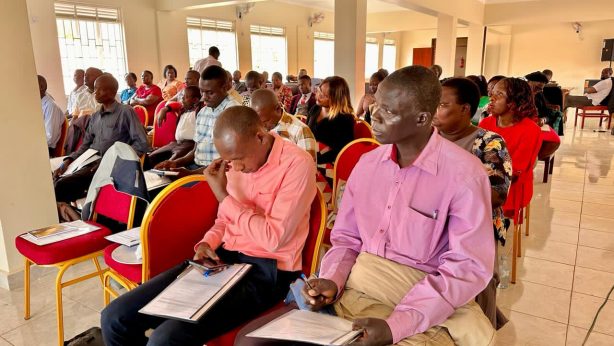Electoral Reform Beyond the Headlines and Why Mid-Cycle Interventions Like FURIC Matter
Kenya’s electoral history reads like a series of political wake-up calls. Each cycle, we come perilously close to the edge—disputed results, institutional paralysis, public unrest—only to reset with promises of reform. But the difference between a reactive democracy and a resilient one lies in how it treats the in-between moments: the periods when elections are not imminent but reforms are still urgent.
This is precisely what makes the Follow-Up Recommendation Implementation Conference (FURIC)—held on March 20th, 2025—so significant. Convened by the Uchaguzi Platform in collaboration with ELOG and other key stakeholders, the conference marked a critical mid-cycle checkpoint on Kenya’s long road to electoral integrity. Rather than wait for the 2027 General Election to dictate the pace of reform, FURIC positioned itself upstream, where reforms are not only possible but most impactful.
The Power of Mid-Cycle Momentum
Electoral reform in Kenya has often followed a crisis-response model. Post-election violence in 2007 gave us the Kriegler and Waki reports. Contested outcomes in 2013 and 2017 spurred piecemeal legal adjustments. Yet these reactive reforms tend to be high-stakes, high-pressure, and politically volatile. By contrast, FURIC’s mid-cycle approach is designed for sober reflection and institutional planning. It draws from negotiation theory’s pre-negotiation phase: when parties can still listen, plan, and bargain without the weight of electoral urgency distorting the process. This model creates space for deliberative, inclusive reform, grounded in data, not drama.
At the heart of the conference was the presentation of a proposed 10-point electoral reform agenda. Structured around persistent systemic gaps, the agenda offered a roadmap for administrative, legal, and policy changes. Issues tackled ranged from political party financing and electoral dispute resolution to voter education and the inclusion of marginalised groups.
Twaweza participated in thematic sessions on voter registration, education and participation of marginalised groups, where we shared findings from the Ready to Vote campaign. The data underscore that youth and women are not disengaged due to apathy, but rather due to structural barriers, including cumbersome identity card (ID) processes and opaque civic communication. Social movements are key actors in bridging this disconnect by translating civic duty into a sense of civic identity.
Meanwhile, the session on marginalised groups made clear that inclusion requires more than legislative intention—it demands administrative precision. For persons with disabilities (PWDS), youth, and women to participate meaningfully, electoral frameworks must evolve from symbolic accommodation to structural integration.
One of FURIC’s most consequential outcomes was the development of a monitoring mechanism to track the uptake of reform recommendations. This is not just a bureaucratic exercise—it’s a political tool. A well-designed monitoring framework does three critical things:
- It builds public trust by creating transparency around implementation.
- It pressures institutions to stay on schedule and within mandate.
- It empowers civil society to serve as watchdogs, not just advocates.
In behavioural economics terms, what FURIC introduces is a “commitment device”—a way to align future behaviour with present promises. The challenge ahead lies in resourcing and institutionalising this mechanism so it does not rely solely on voluntary compliance.
Without follow-through, the cost of electoral failure will be borne politically, economically, and socially. Kenya’s elections are already among the most expensive per capita in the world. Yet, high costs have not translated into high trust. Electoral apathy, particularly among youth, is deepening. Systemic inequalities continue to limit participation for large segments of the population. Failure to act now means that political events will overshadow reform efforts in 2026 and 2027, when the space for substantive dialogue will narrow. Worse still, the perception that reforms are performative—drafted and discussed but never delivered—risks further eroding institutional legitimacy.
Toward a Practised, Not Just Promised, Democracy
FURIC represents a turning point—not because it delivered sweeping reforms but because it reframed the timing and tempo of reform. The work of building credible elections starts years before campaigns begin. Suppose democracy is to function more than just a five-year ritual. In that case, we must normalise what the FURIC modelled—a timely, inclusive, and accountable reform dialogue anchored in civic evidence and guided by institutional discipline. The burden now falls on Parliament, political parties, regulatory bodies, and civil society not to let this window close.
In Kenya, as in any maturing democracy, the real election will not be in 2027. It is in every policy decision made—or avoided—in 2025.


